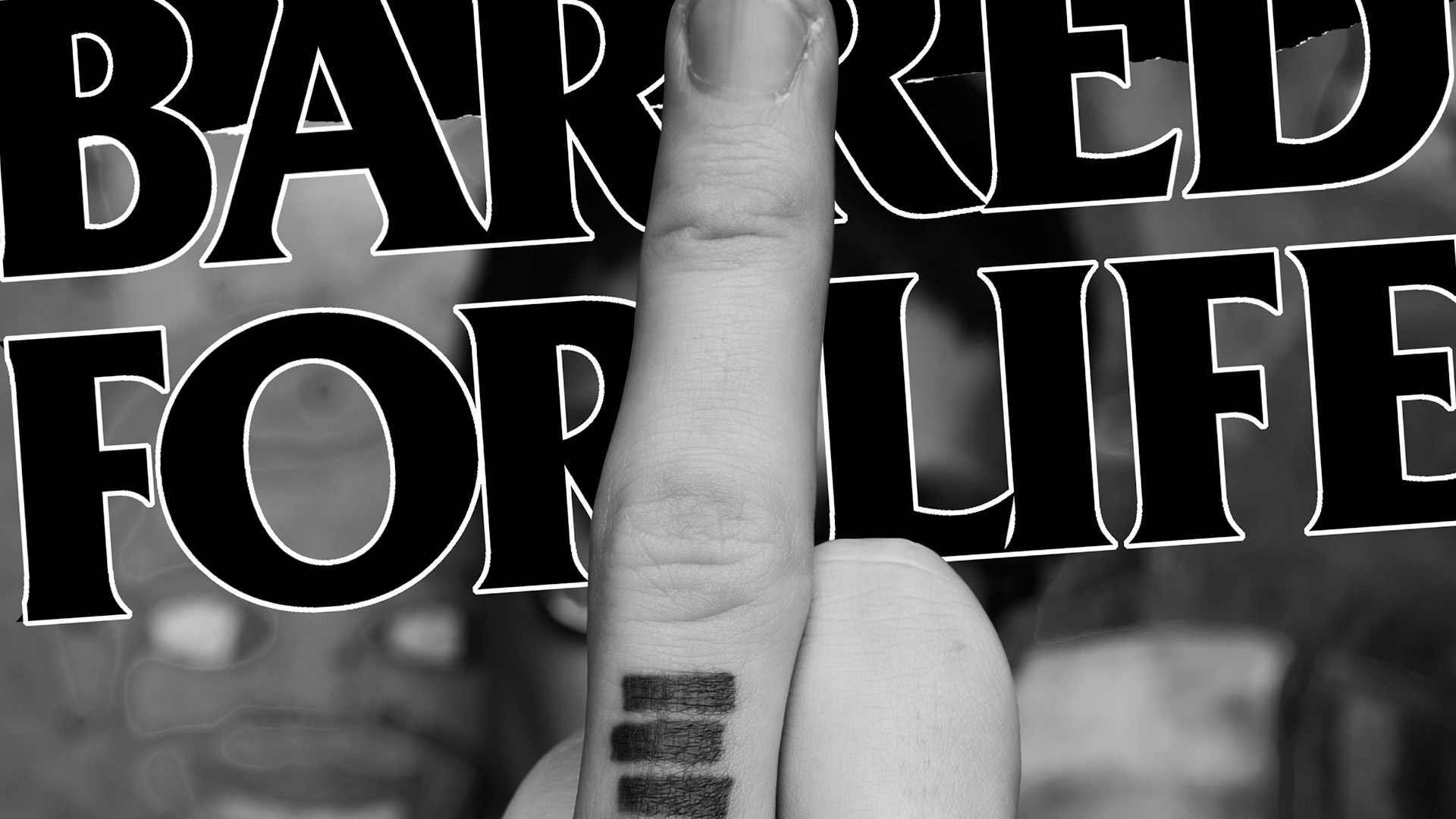By John Gentile
Punknews.org
July 24th, 2013
There are many books on symbol theory. For the most part, they all come down to the concept that if someone repeats a symbol enough times, one can actually manifest a certain reaction and control over someone else – with the original meaning of the symbol completely disassociated from the symbol itself. Powerful symbols like crosses, peace signs, and celtic runes have all been the subject of this study, but Barred for Life studies this concept through the Black Flag bars, the first time the iconic logo has been dissected in such a manner.
Thankfully, Barred for Life avoids being another Black Flag history lesson; by now, we’ve got all the Black Flag info that we’re going to get, short of Ginn, Dukowski, Morris, Reyes, Cadena, or Rollins publishing autobiographies, and Barred wisely states its intention to not regurgitate readily available information. Rather, Barred investigates the bars on three levels.
The upper most level – and most effective part of the book – is when author Stewart Dean Ebersole interviews band members and Black Flag associates about what the bars symbol meant to them. Ebersole is able to gain access to Black Flag characters who rarely grant interviews, such as logo designer Raymond Pettibon and tattoo artist Rick Spellman, who in all likelihood tattooed the very first bars on a person’s skin – and that person happened to be Dez Cadena. The interviews are remarkably personal, and people like Kira Roessler and Dukowski bely some of their most personal information to date. On the other end, some of the stories are simply hilarious.
Perhaps the best part of the book is when Cadena recounts the first time the band took Bill Stevenson on tour. According to Cadena, Stevenson demanded “Where is Robo?! I hate you guys. What the fuck, this is New York and there are giant rats. Dezo, stay near me, there are giant rats. This is New York!” It is sidesplittingly funny how Bill Stevenson, the band’s replacement for Robo, is demanding to know where Robo is and frequently comments on the band’s physical location. Of course, Rollins and Ginn opt to not to contribute interviews and frankly, it’s their loss. The interviews nonetheless feel complete without them, showing that Black Flag was the result of many people and not just two of its most visible members. In fact, Roessler’s revealing interview might suggest as to why Rollins is always so tight-lipped about Black Flag these days.
The second level of the book focuses on people who have the bars tattooed on their body. Some four hundred odd fans stood in front of photographer Jared Castaldi’s camera, bared their bars tattoos and answered a quick questionnaire about their jobs and favorite Black Flag releases. It’s interesting to see the range of ages across the book, and equally interesting to see the vast number of similarities which crop up between people with the tattoo. Even more intriguing is that a good deal of the subjects make basic mistakes when referencing Black Flag, such as referring to Ron Reyes as Chavo Pederast, a name roughly translating as “child molester” under which the band credited him under after he left, and which Reyes has stated he finds offensive. These types of mistakes make the book that much more revealing. People, and a good number of them at that, would choose to permanently alter their flesh despite only knowing the basics of what a symbol represents. Equally interesting is that a great number of people cite Keith Morris as their favorite singer, but then cite a non-Keith Morris recording as their favorite release by the band.
At the most human level is Ebersole himself. Ebersole connects the book with a lengthy, several-part essay about what punk rock meant to him and what society changes it caused. Ebersole opens his portion with a daring gambit: Instead of portraying himself as a Black Flag expert, he basically says that Black Flag aren’t his favorite band, that he likes the first four years but doesn’t have much use for anything after Damage. On one hand, he could jeopardize his credibility. Why should someone that can so easily dismiss My War and the period when Black Flag really took chances investigate the meaning behind the bars as applied to people? But on the other hand, by revealing his bias, Ebersole could be said to be a more accurate director as the audience knows his angle, and doesn’t need to root out hidden bias. There’s no one way to play it.
Ebersole writes in a brisk, conversational tone. At times his extended essay is daringly specific and direct, investigating what the bars have come to mean with a tweezer. But he is also equally likely to wander off into stories about his own youth, which come to resemble more an autobiography than a study of what the bars mean. Still, because Ebersole seeks out Black Flag musicians and supplements the conversation with 400 people bearing the mark, it could be that his essay is merely example in action, the bars investigated at their most human level.
Barred succeeds for two reasons. First, it doesn’t try to repeat the Black Flag story. Second, it doesn’t push an argument so much as it gathers evidence and allows the reader to make his or her own opinion on the topic. If anything, the bars themselves certainly stand for the concept of independent thought.
Back to Stewart Dean Ebersole’s Author Page | Back to Jared Castaldi’s Artist Page







